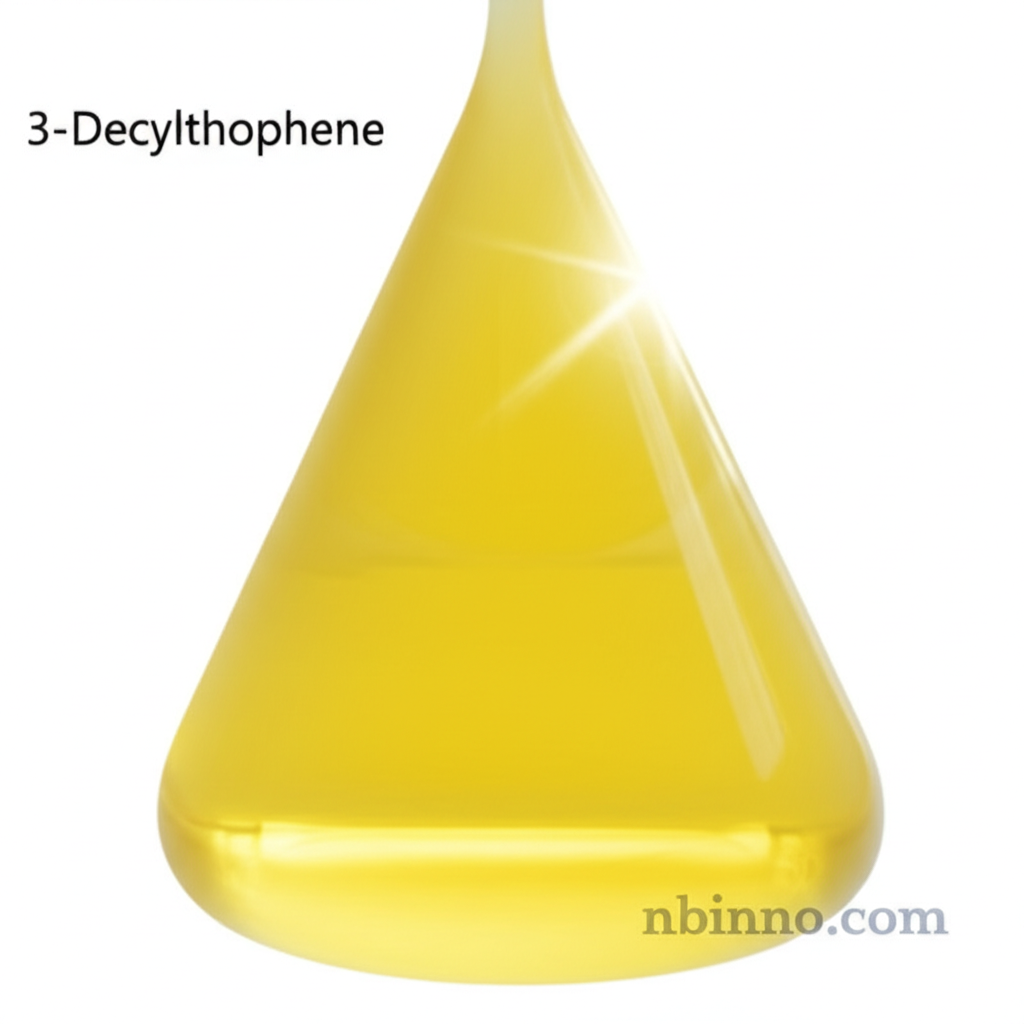3-Decylthiophene: A Key Monomer for Advanced Conductive Polymers
Discover the essential properties and applications of 3-Decylthiophene, a vital component in the development of next-generation organic electronic materials. Explore its use in conductive polymers and its role as a high-quality chemical intermediate.
Get a Quote & SampleProduct Core Value

3-Decylthiophene
As a leading supplier in China, we offer 3-Decylthiophene (CAS: 65016-55-9), a crucial building block for high-performance conductive polymers. Its unique chemical structure allows for excellent solubility in organic solvents and contributes to the desirable electrical and optical properties of derived polymers, making it indispensable for cutting-edge applications in organic electronics.
- Explore the synthesis of conductive polymers using 3-Decylthiophene as a precursor, a key aspect of advancing organic electronics applications.
- Understand the physical and chemical properties of 3-Decylthiophene, critical for optimizing its performance in various synthetic processes.
- Learn about the role of 3-Decylthiophene in the development of advanced materials for batteries, enhancing their efficiency and longevity.
- Discover why sourcing 3-Decylthiophene from a reliable manufacturer in China ensures high quality and consistent performance for your research and production needs.
Advantages Offered
Enhanced Material Properties
The incorporation of 3-Decylthiophene into polymer chains significantly enhances the resulting materials' electrical conductivity and optical characteristics, critical for high-performance applications.
Improved Processability
Its excellent solubility in common organic solvents simplifies processing and fabrication of thin films and devices, aiding in the scaling up of production for various organic electronics.
Versatile Application Range
From advanced battery electrodes to sensitive chemical sensors, 3-Decylthiophene serves as a versatile intermediate, enabling innovation across multiple technological fields.
Key Applications
Conductive Polymers
As a primary monomer, 3-Decylthiophene is essential for synthesizing poly(3-decylthiophene) (P3DT), a leading material in conductive polymer research and industrial applications.
Organic Electronics
This compound is a vital precursor for components in organic field-effect transistors (OFETs), organic light-emitting diodes (OLEDs), and organic photovoltaics (OPVs), driving innovation in display and energy technologies.
Energy Storage
Its derivatives are explored for use in rechargeable battery electrodes, contributing to the development of more efficient and reliable energy storage solutions.
Chemical Sensors
The unique electronic properties of polymers derived from 3-Decylthiophene make them suitable for developing highly sensitive chemical and optical sensors.
